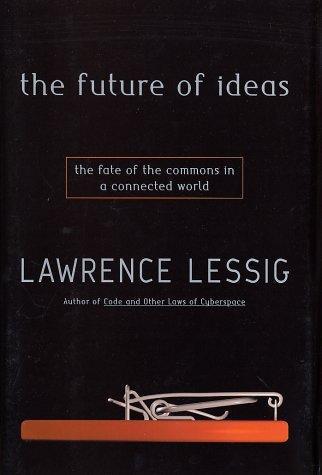
The Future of Ideas: The Fate of the Commons in a Connected World
by
Lawrence Lessig
Published 14 Jul 2001
There is a second line of work that suggests another efficiency-based reason why open resources may have more value than closed resources. This work derives from the theory of management, and it helps explain why control can sometimes systematically fail. The idea here has been made familiar by Professor Clay Christensen of the Harvard Business School in his book The Innovator's Dilemma. 15 The dilemma describes a perfectly understandable series of decisions that leads well-managed companies to miss the opportunities of disruptive technological change. Leading companies within a particular market will outperform others in perfecting the technology that defines their existing market.
…
Its inability to recognize the value in a radically different model of doing business may well have been a rational decision, given the information available. What Christensen teaches is why, systematically, the view of what is rational from the perspective of a single actor may well prove irrational from the perspective of the market as a whole. The Innovator's Dilemma offers its own strategy for dealing with this blindness. But we can see in the Internet a strategy for dealing with the very same blindness. If firms will be focused on continuing progress, if they will ignore new markets that fail to promise the same level of supracompetitive returns, if they will miss disruptive technologies that in fact produce radical new industries, then we have another reason, in theory, to keep at least some critical resources for innovation within a commons.
…
It is, instead, what architecture for innovation best speeds us along the path to the long run. Which architectures encourage experimentation? Which permit the old to protect themselves against the new? Which permit the new the most freedom to question the old? This raises again precisely the issues that Christensen describes in his Innovator's Dilemma. As I've said, Christensen's argument doesn't depend upon stupidity. He is not identifying a failure in the market; he's identifying a feature of successful companies' perspective. The problem is not that the decision maker is irrational; the problem is that innovation is controlled by the wrong decision maker.
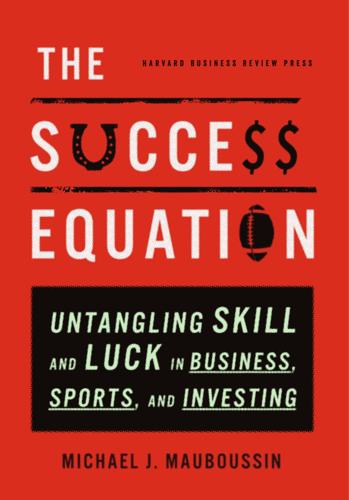
The Success Equation: Untangling Skill and Luck in Business, Sports, and Investing
by
Michael J. Mauboussin
Published 14 Jul 2012
KC Joyner, Blindsided: Why the Left Tackle Is Overrated and Other Contrarian Football Thoughts (Hoboken, NJ: John Wiley & Sons, 2008), 76–77; and Brian Skinner, “Scoring Strategies for the Underdog: A General, Quantitative Method for Determining Optimal Sports Strategies,” Journal of Quantitative Analysis in Sports 7, no. 4 (October 2011): article 11. 7. Michael Lewis, “Coach Leach Goes Deep, Very Deep,” New York Times Magazine, December 4, 2005. 8. Clayton M. Christensen, The Innovator's Dilemma: When New Technologies Cause Great Companies to Fail (Boston: MA: Harvard Business School Press, 1997). 9. Clayton M. Christensen and Michael E. Raynor, The Innovator's Solution: Creating and Sustaining Successful Growth (Boston, MA: Harvard Business School Press, 2003). 10. Clayton M. Christensen, Scott D.
…
Peter Pronovost, MD, PhD, and Eric Vohr, Safe Patients, Smart Hospitals: How One Doctor's Checklist Can Help Us Change Health Care from the Inside Out (New York: Hudson Street Books, 2010). 17. Philip E. Tetlock, Expert Political Judgment: How Good Is It? How Can We Know? (Princeton, NJ: Princeton University Press, 2005), 129–143. 18. Clayton M. Christensen, The Innovator's Dilemma: When New Technologies Cause Great Companies to Fail (Boston: MA: Harvard Business School Press, 1997). 19. Daniel Kahneman, presentation at the Thought Leader Forum, October 7, 2011, http://thoughtleaderforum.com/957443.pdf. BIBLIOGRAPHY Adair, Robert K., PhD. The Physics of Baseball: Revised, Updated, and Expanded.
…
“Are Some Mutual Fund Investors Better Than Others? Cross-Sectional Patterns in Behavior and Performance.” Journal of Finance 54, no. 3 (June 1999): 875–899. Chi, Michelene T. H., Robert Glaser, and Marshall Farr, eds. The Nature of Expertise. Hillsdale, NJ: Lawrence Erlbaum Associates, 1988. Christensen, Clayton M. The Innovator's Dilemma: When New Technologies Cause Great Companies to Fail. Boston: MA: Harvard Business School Press, 1997. Christensen, Clayton M., and Michael E. Raynor. The Innovator's Solution: Creating and Sustaining Successful Growth. Boston, MA: Harvard Business School Press, 2003. Christensen, Clayton M., Scott D.

Free culture: how big media uses technology and the law to lock down culture and control creativity
by
Lawrence Lessig
Published 15 Nov 2004
No one can question without risk of consequence—not necessarily banishment to Siberia, but punishment nonetheless. Independent, critical, different views are quashed. This is not the environment for a democracy. Economics itself offers a parallel that explains why this integration affects creativity. Clay Christensen has written about the "Innovator's Dilemma": the fact that large traditional firms find it rational to ignore new, breakthrough technologies that compete with their core business. The same analysis could help explain why large, traditional media companies would find it rational to ignore new cultural trends.[150] Lumbering giants not only don't, but should not, sprint.
…
"In some instances … the impact of piracy on the copyright holder's ability to appropriate the value of the work will be negligible. One obvious instance is the case where the individual engaging in pirating would not have purchased an original even if pirating were not an option." Ibid., 149. [73] Bach v. Longman, 98 Eng. Rep. 1274 (1777). [74] See Clayton M. Christensen, The Innovator's Dilemma: The Revolutionary National Bestseller That Changed the Way We Do Business (New York: HarperBusiness, 2000). Professor Christensen examines why companies that give rise to and dominate a product area are frequently unable to come up with the most creative, paradigm-shifting uses for their own products.
…
Kimmelman quotes Victoria Riskin, president of Writers Guild of America, West, in her Remarks at FCC En Banc Hearing, Richmond, Virginia, 27 February 2003. [148] Ibid. [149] "Barry Diller Takes on Media Deregulation," Now with Bill Moyers, Bill Moyers, 25 April 2003, edited transcript available at link #31. [150] Clayton M. Christensen, The Innovator's Dilemma: The Revolutionary National Bestseller that Changed the Way We Do Business (Cambridge: Harvard Business School Press, 1997). Christensen acknowledges that the idea was first suggested by Dean Kim Clark. See Kim B. Clark, "The Interaction of Design Hierarchies and Market Concepts in Technological Evolution," Research Policy 14 (1985): 235¬51.

An Elegant Puzzle: Systems of Engineering Management
by
Will Larson
Published 19 May 2019
_encoding=UTF8andbtkr=1 45. https://lethain.com/first-team/ 46. https://lethain.com/hosting-paper-reading-group/ Chapter 4: Approaches 1. https://lethain.com/strategies-visions/ 2. https://www.amazon.com/Phoenix-Project-DevOps-Helping-Business/dp/0988262592 3. https://lethain.com/case-against-top-down-global-optimization/ 4. https://lethain.com/productivity-in-the-age-of-hypergrowth/ 5. https://lethain.com/infrastructure-between-cost-center-and-before-ego-trip/ 6. https://en.wikipedia.org/wiki/Golden_Rule 7. https://medium.com/@evnowandforever/f-you-i-quit-hiring-is-broken-bb8f3a48d324 8. https://en.wikipedia.org/wiki/Dialectic#Hegelian_dialectic 9. https://lethain.com/adding-value-as-an-engineering-manager/ 10. https://lethain.com/ways-engineering-managers-get-stuck/ 11. https://en.wikipedia.org/wiki/The_Good_Earth 12. https://lethain.com/ways-engineering-managers-get-stuck/ 13. https://www.amazon.com/Getting-Right-Tao-Contemporary-Ching/dp/0982473982 14. https://lethain.com/some-of-my-favorite-technical-papers/ 15. https://lethain.com/good-strategy-bad-strategy/ 16. https://en.wikipedia.org/wiki/Sensitivity_analysis Chapter 5: Culture 1. https://lethain.com/selecting-project-leads/ 2. https://lethain.com/selecting-project-leads/ 3. https://lethain.com/hosting-paper-reading-group/ 4. https://www.donut.com/ 5. https://lethain.com/sizing-engineering-teams/ 6. https://www.attack-gecko.net/2018/06/25/building-a-first-team-mindset/ 7. https://en.wikipedia.org/wiki/Rooney_Rule 8. https://en.wikipedia.org/wiki/Me_and_Bobby_McGee 9. http://classics.mit.edu/Plato/apology.html 10. https://plato.stanford.edu/entries/liberty-positive-negative/ 11. https://plato.stanford.edu/entries/liberty-positive-negative/#ParPosLib 12. https://en.wikipedia.org/wiki/System_dynamics 13. https://www.amazon.com/Slack-Getting-Burnout-Busywork-Efficiency/dp/0767907698 14. https://a16z.com/2014/02/06/6147/ 15. https://www.amazon.com/Innovators-Dilemma-Revolutionary-Change-Business/dp/0062060244 16. https://www.amazon.com/Thinking-Systems-Donella-H-Meadows/dp/1603580557/ 17. https://en.wikipedia.org/wiki/Dust_Bowl 18. https://en.wikipedia.org/wiki/Foundation_series Chapter 6: Careers 1. https://www.wired.com/story/surviving-as-an-old-in-the-tech-world/ 2. https://blog.wealthfront.com/how-long-should-you-stay-at-your-job/ 3. https://www.linkedin.com/in/will-larson-a44b543/ 4. http://randsinrepose.com/archives/wanted/ 5. https://www.comparably.com/blog/best-places-to-work-competition/ 6. https://www.lever.co/ 7. http://www.greenhouse.io/ 8. https://lethain.com/membership-opportunity/ 9. https://lethain.com/membership-opportunity/ 10. https://jvns.ca/blog/2017/12/31/2017--year-in-review/ 11. https://lethain.com/first-team/ 12. https://www.businessinsider.com/stack-ranking-employees-is-a-bad-idea-2013-11 13. https://www.amazon.com/Work-Rules-Insights-Inside-Transform-ebook/dp/B00MEMMVB8 14. https://lethain.com/skew-the-frontend-engineer-s-misery/ 15. https://lethain.com/hiring-funnel/ 16. https://lethain.com/perf-management-system/ 17. https://en.wikipedia.org/wiki/Site_Reliability_Engineering 18. https://lethain.com/running-an-engineering-reorg/ 19. https://lethain.com/career-levels-and-more/ 20. https://lethain.com/perf-management-system/ 21. https://lethain.com/hiring-funnel/ 22. https://www.amazon.com/Cracking-Coding-Interview-Programming-Questions/dp/098478280X 23. https://lethain.com/hiring-funnel/ 24. https://lethain.com/perf-management-system/ 25. https://lethain.com/perf-management-system/ Chapter 7: Appendix 1. https://twitter.com/davinbogan 2. https://lethain.com/hosting-paper-reading-group/ 3. https://en.m.wikipedia.org/wiki/Butler_Lampson 4. https://12factor.net 5. https://en.wikipedia.org/wiki/CAP_theorem 6. https://www.semanticscholar.org/paper/Harvest%2C-Yield-and-Scalable-Tolerant-Systems-Fox-Brewer/50158bc1a8a67295ab7bce0550886a9859000dc2 7. https://zipkin.io/ 8. https://opentracing.io/ 9. http://kafka.apache.org/ 10. http://catb.org/jargon/html/S/second-system-effect.html 11. https://www.jwz.org/doc/worse-is-better.html 12. http://mesos.apache.org/ 13. https://medium.com/netflix-techblog/prana-a-sidecar-for-your-netflix-paas-based-applications-and-services-258a5790a015 14. https://github.com/etcd-io/etcd 15. https://www.influxdata.com/ 16. https://zookeeper.apache.org/ 17. https://en.m.wikipedia.org/wiki/TLA%2B 18. https://en.m.wikipedia.org/wiki/YubiKey 19. https://www.usenix.org/system/files/login/articles/login_dec14_02_ward.pdf 20. https://parasol.tamu.edu/pivot/ 21. https://ai.google/research/pubs/pub41342 Chapter 7: Appendix; Books I’ve found very useful 1. https://www.amazon.com/Thinking-Systems-Donella-H-Meadows/dp/1603580557/ref=sr_1_1?
…
keywords=Finite+and+Infinite+Games+by+James+Carse&qid=1551586314&s=gateway&sr=8-1 11. https://www.amazon.com/INSPIRED-Create-Tech-Products-Customers/dp/1119387507/ref=sr_1_fkmrnull_1?keywords=INSPIRED%3A+How+to+Create+Tech+Products+Customers+Love+by+Marty+Cagan&qid=1551586391&s=gateway&sr=8-1-fkmrnull 12. https://www.amazon.com/Innovators-Dilemma-Technologies-Management-Innovation/dp/1633691780/ref=sr_1_fkmrnull_1?keywords=The+Innovator’s+Dilemma%3A+When+New+Technologies+Cause+Great+Firms+to+Fail+by+Clayton+Christensen&qid=1551586451&s=gateway&sr=8-1-fkmrnull 13. https://www.amazon.com/Myth-Revisited-Small-Businesses-About-ebook/dp/B000RO9VJK/ref=sr_1_fkmrnull_1?
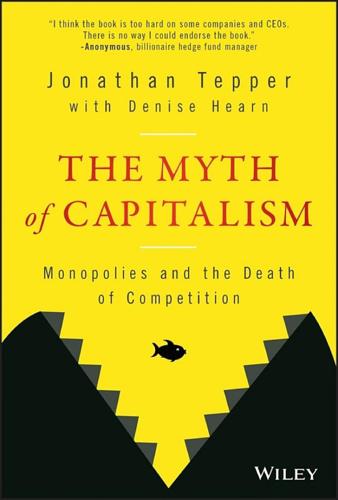
The Myth of Capitalism: Monopolies and the Death of Competition
by
Jonathan Tepper
Published 20 Nov 2018
Likewise, AT&T and RCA were extremely innovative companies, but other companies ultimately developed their key technologies, such as the transistor. AT&T and RCA stuck to phones and radio, and became the antithesis of originality.55 There is a reason why big companies are so bad at implementing new ideas. Steve Jobs rarely recommended books, but he liked The Innovator's Dilemma by Clayton Christensen. His 1997 book was embraced by Silicon Valley and called one of the six best business books ever by The Economist.56 Christensen's theory was that because successful companies cannot disrupt themselves; they leave themselves vulnerable to competition from upstarts because they abandon the lower end of the market.
…
Heinz Company, 3G/Buffett purchase, 3–4 Hoffer, ERic, 230 Horizontal shareholding, 209 disallowance, 246–247 problems, 200 Hospitals, mergers (impact), 43, 129 Housing costs, increase, 114 Hull, Cordell, 150 Hurricane Maria, impact, 60 Huxley, Aldous, 113 I IG Farben dissolution, 148 economic power, 147 “marriage,” 149 Immelt, Jeffrey, 211 Income distribution, union membership (contrast), 79f inequality (United States), 214f, 215–217 Income inequality, 36 increase, 37–40 Industry consolidation, timeline, 162f Inequality causes, 217 concentrated industries, impact, 225–226 income inequality, 37–40, 214f, 225f increase (Gini coefficients), 220f Information superhighway, Google dominance, 108 Initial public offerings (IPOs), 107 collapse, 11f Innovation, monopoly power deterrence, 54 Innovator's Dilemma, The, (Christensen), 55 Instagram, Facebook acquisition, 91 Instant Articles (Facebook), 102 Intaler, market dominance, 130 Intellectual property exploitation, 173 protection, 69–70 Intel, market domination, 121 Interest rates, increase, 64 Internal equity, 206 International Monetary Fund (IMF), developed country analysis, 216 Internet giants, avoidance, 247–248 platforms, common carriage rules (creation), 245 Intuit, market dominance, 125–126 Investment gap, 57–58 profitability, contrast, 57f reduction, 56–57 Invisible hand (Smith), 38 iPhone, Silicon Valley metaphor, 114 Ireland-Smith, Renee, 61 Irish Potato Famine, 59 IRS Restructuring and Reform Act, 126 J Jackson, Thomas Penfield, 94 Jefferson, Thomas, 50 Jeffreys, Diarmuid, 147 Jelinek, Craig, 77 Jevons' Paradox, 18 Jevons, William Stanley, 18 Job Creation and Destruction (Haltiwanger), 50 Jobs creation, 50, 74–75 reduction, 45–47 Jobs, Steve, 67–68 John D.
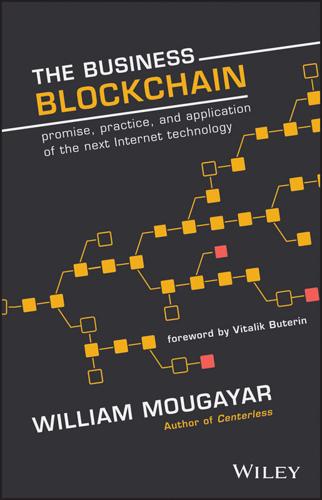
The Business Blockchain: Promise, Practice, and Application of the Next Internet Technology
by
William Mougayar
Published 25 Apr 2016
However, full implementation will bear additional costs, not unlike the costs of typical information technology-related projects and deployments. Some Chief Information Officers (CIOs) may be reluctant to add to their tight budgets, until early returns on investment have been demonstrated. Innovators Dilemma It is difficult to innovate within your business model, because you will typically attempt to tie everything back to it, resulting in a shortsighted and limited view of what is possible. This is especially true if your business has a trust-related function (such as a clearinghouse). Current intermediaries will encounter the hardest change, because the blockchain hits at the core of their value proposition.
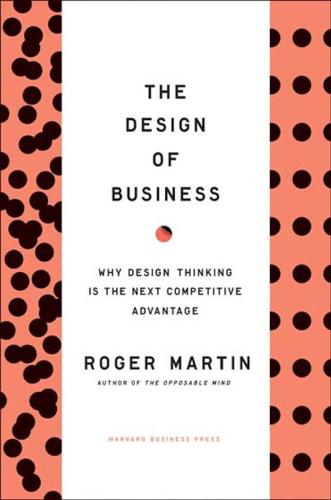
Design of Business: Why Design Thinking Is the Next Competitive Advantage
by
Roger L. Martin
Published 15 Feb 2009
As he says, “evolution doesn’t tolerate junk for too long, so all data, even the outliers, need to be considered.” Ultimately, he was interested not in producing a reliable outcome but a valid one. He wanted to generate a theory on the origins of ASD that would move knowledge forward. This distinction, between reliability and validity, is at the heart of the innovation dilemma, for medical researchers and business-people alike. The challenge is how to balance the irresolvable tension between operating within the current knowledge stage and moving through the knowledge funnel. The tension can’t be fully resolved but only balanced and managed, because reliability and validity are inherently incompatible.
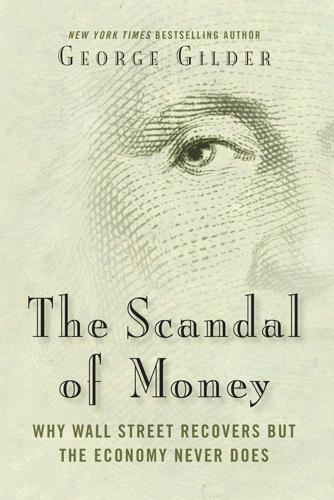
The Scandal of Money
by
George Gilder
Published 23 Feb 2016
Economic Prospects: Secular Stagnation, Hysteresis, and the Zero Lower Bound,” keynote address, National Association of Business Economists’ Policy Conference, February 24, 2014, which focuses on the impotence of expansionary monetary policy when interest rates approach zero. 7.Peter Thiel with Blake Masters, Zero to One: Notes on Startups, or How to Build the Future (New York, NY: Crown Business, 2014), 193. For my time-sensitive money, this is the most original and interesting book ever written on business strategy. (Its chief rival is the more technical Innovators’ Dilemma by Clayton Christensen.) 8.Nassim Nicholas Taleb and Mark Spitznagel, “The Great Bank Robbery,” Global Public Square, CNN, October 2011. 9.David Malpass, speech to the Needham Growth Conference, New York, January 15, 2015. As Malpass points out, zero interest rates mean free money, and “when anything is free it is allocated by queue and only the privileged folk at the front of the line get any.” 10.Charles Gave, “Poverty Matters for Capitalists,” GavekalDragonomics (Hong Kong: Gavekal Global Research, July 9, 2014), 1–6.
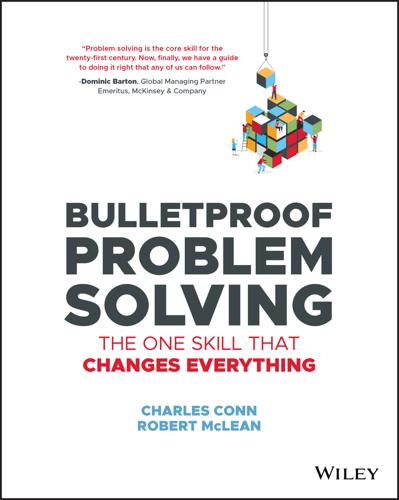
Bulletproof Problem Solving
by
Charles Conn
and
Robert McLean
Published 6 Mar 2019
Define the problem with your banking relationship. What are the pain points in your user experience? How might they be alleviated through product or process changes? Dream up an unmet consumer need and run it through the design thinking cycle. Note 1 See, for example: Clayton M. Christensen, The Innovator's Dilemma: When New Technologies Cause Great Firms to Fail (Harvard Business School Press, 1997). Chapter Three Problem Disaggregation and Prioritization Introduction Good problem disaggregation is at the heart of the seven steps process. Any problem of real consequence is too complicated to solve without breaking it down into logical parts that help us understand the drivers or causes of the situation.
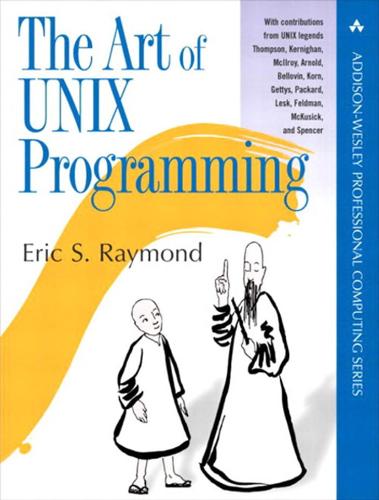
The Art of UNIX Programming
by
Eric S. Raymond
Published 22 Sep 2003
The lesson for the future is that over-committing to any one technology or business model would be a mistake — and maintaining the adaptive flexibility of our software and the design tradition that goes with it is correspondingly imperative. Another lesson is this: Never bet against the cheap plastic solution. Or, equivalently, the low-end/high-volume hardware technology almost always ends up climbing the power curve and winning. The economist Clayton Christensen calls this disruptive technology and showed in The Innovator's Dilemma [Christensen] how this happened with disk drives, steam shovels, and motorcycles. We saw it happen as minicomputers displaced mainframes, workstations and servers replaced minis, and commodity Intel machines replaced workstations and servers. The open-source movement is winning by commoditizing software.
…
Recommended C Style and Coding Standards. 1990. An updated version of the Indian Hill C Style and Coding Standards paper, with modifications by the last three authors. It describes a recommended coding standard for C programs. Available on the Web. [Christensen] Clayton Christensen. The Innovator's Dilemma. HarperBusiness. 2000. ISBN 0-066-62069-4. The book that introduced the term “disruptive technology”. A fascinating and lucid examination of how and why technology companies doing everything right get mugged by upstarts. A business book technical people should read. [Comer] Unix Review.
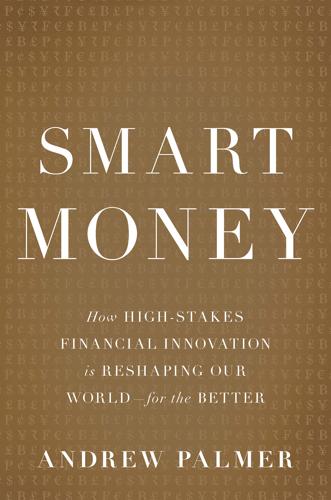
Smart Money: How High-Stakes Financial Innovation Is Reshaping Our WorldÑFor the Better
by
Andrew Palmer
Published 13 Apr 2015
A survey of Funding Circle borrowers carried out in 2013 found that 60 percent of them had approached a bank for a loan before finding their way to the platform; asked why these bank applications had not been completed, the top answer was that the process took too long.2 When I visited Funding Circle in 2013, the average time it took for them to screen a borrower’s application was forty-eight hours. Once a borrower was listed, it took just over six days for the loan to be funded. Those times will doubtless have shortened since. At banks the process can take weeks, as decisions bounce from department to department. Banks are also hamstrung by something known as the innovators’ dilemma: the desire to protect existing income streams rather than invent products that may be better. For another example of this problem, look away from debt to foreign exchange and northeast from Zopa’s London offices to the fashionable area of Shoreditch. Here in a renovated tea warehouse, you can find another set of people with big ambitions and a low opinion of mainstream finance.

Exponential Organizations: Why New Organizations Are Ten Times Better, Faster, and Cheaper Than Yours (And What to Do About It)
by
Salim Ismail
and
Yuri van Geest
Published 17 Oct 2014
For more on how to create effective value propositions, we recommend reading Osterwalder’s new book, Value Proposition Design: How to Create Products and Services Customers Want. Step 6: Find a Business Model It is also important to understand that if you’re going to achieve a 10x improvement, there’s a strong likelihood that your company will require a completely new business model. As Clayton Christensen illustrated in The Innovators Dilemma, which was published in 1997, disruption is mostly achieved by a startup offering a less expensive product using emerging technologies and meeting a future or unmet customer need or niche. Christensen emphasized that it is not so much about disruptive products, but more about new business models threatening incumbents.

The Internet Is Not the Answer
by
Andrew Keen
Published 5 Jan 2015
,” Observer, January 21, 2012, theguardian.com/technology/2012/jan/22/john-naughton-kodak-lessons. 55 Clayton Christensen, The Innovator’s Dilemma: The Revolutionary Book That Will Change the Way You Do Business (New York: Harper Business, 2011). For an introduction to Christensen’s ideas, see my TechCrunchTV interview with him. “Keen On . . . Clay Christensen: How to Escape the Innovator’s Dilemma,” April 2, 2012, techcrunch.com/2012/04/02/keen-on-clay-christensen-how-to-escape-the-innovators-dilemma-tctv. For a more critical view on the cult of Christensen, see Jill Lepore, “The Disruption Machine,” New Yorker, June 23, 2014. 56 “The Last Kodak Moment?,” Economist, January 14, 2012. economist.com/node/21542796/print. 57 Stone, The Everything Store, p. 348. 58 Joshua Cooper Ramo, The Age of the Unthinkable: Why the New World Disorder Constantly Surprises Us and What We Can Do About It (New York: Bay Back Books, 2010). 59 Paul F.

The Age of Stagnation: Why Perpetual Growth Is Unattainable and the Global Economy Is in Peril
by
Satyajit Das
Published 9 Feb 2016
Further underlying the nature of modern innovation, in 2015 Ashley Madison, an online site for people seeking extramarital affairs, announced plans to raise US$200 million to expand the market for adultery. Industrial revolution 3 emphasizes disruptive technologies, a term associated with Harvard professor Clayton Christensen and his influential 1997 book The Innovator's Dilemma. It differentiated between sustainable innovations, which improve products and make valuable changes for a firm's current customers, and disruptive innovations—cheaper, poorer-quality products that initially target less profitable customers so as to undercut existing businesses, with the object of eventually dominating the industry.

Human Frontiers: The Future of Big Ideas in an Age of Small Thinking
by
Michael Bhaskar
Published 2 Nov 2021
, The Conversation, accessed 29 October 2019, available at https://theconversation.com/human-intelligence-have-we-reached-the-limit-of-knowledge-124819 Braben, Donald W. (2020), Scientific Freedom: The Elixir of Civilization, San Francisco: Stripe Press Brennan, Reilly (2019), ‘The State of Autonomous Transportation’, Exponential View, accessed 11 January 2021, available at https://www.exponentialview.co/p/the-state-of-autonomous-transportation Brockliss, Laurence (2019), The University of Oxford: A Brief History, Oxford: Bodleian Library Brockman, John (ed.) (2020), Possible Minds: 25 Ways of Looking At AI, New York: Penguin Bromham, Lindell, Dinnage, Russell, and Hua, Xia (2016), ‘Interdisciplinary research has consistently lower funding success’, Nature 534, pp. 684–7 Buck, Stuart, ‘Escaping Science's Paradox’, Works in Progress, accessed 7 April 2021, available at https://worksinprogress.co/issue/escaping-sciences-paradox/ Burke, Peter (2020), The Polymath: A Cultural History from Leonardo da Vinci to Susan Sontag, New Haven, CT: Yale University Press Bush, Vannevar (1945), Science: The Endless Frontier, Washington DC: United States Government Printing Office Callard, Agnes (2020), ‘Publish and Perish’, The Point, accessed 6 October 2020, available at https://thepointmag.com/examined-life/publish-and-perish-agnes-callard/ Callaway, Ewen (2020), ‘“It will change everything”: DeepMind's AI makes gigantic leap in solving protein structures’, Nature, accessed 23 December 2020, available at https://www.nature.com/articles/d41586-020-03348-4 Campbell, Chris, and Mathurin, Patrick (2020), ‘Hollywood “sequelitis”’, Financial Times, accessed 9 March 2020, available at https://www.ft.com/content/6d5871d8-3ea7-11ea-b232-000f4477fbca Cancer Research UK (2019), ‘Worldwide cancer statistics’, accessed 20 April 2019, available at https://www.cancerresearchuk.org/health-professional/cancer-statistics/worldwide-cancer#heading-Zero Caplan, Bryan (2018), The Case against Education: Why the Education System Is a Waste of Time and Money, Princeton: Princeton University Press Carey, Nessa (2019), Hacking the Code of Life: How Gene Editing Will Rewrite Our Futures, London: Icon Books Carey, Ryan (2020), ‘Interpreting AI compute trends’, AI Impacts, accessed 11 January 2020, available at https://aiimpacts.org/interpreting-ai-compute-trends/ Chai, Sen (2017), ‘Near Misses in the Breakthrough Discovery Process’, Organization Science, Vol. 28 No. 3, pp. 411–28 Chai, Sen, and Menon, Anoop (2018), ‘Breakthrough recognition: Bias against novelty and competition for attention’, Research Policy, Vol. 48 No. 3, pp. 733–47 Chawla, Dalmeet Singh (2019), ‘Hyperauthorship: global projects spark surge in thousand-author papers’, Nature, accessed 29 March 2021, available at https://www.nature.com/articles/d41586-019-03862-0 Christensen, Clayton M. (2013), The Innovator's Dilemma: When New Technologies Cause Great Firms To Fail (reprint edition), Cambridge, MA: Harvard Business Review Press Clancy, Matt (2020a), ‘How bad is publish-or-perish for the quality of science?’, New Things Under The Sun, accessed 12 January 2021, available at https://mattsclancy.substack.com/p/how-bad-is-publish-or-perish-for Clancy, Matt (2020b), ‘What ails the social sciences’, Works in Progress, accessed 12 January 2021, available at https:// worksinprogress.co/issue/what-ails-the-social-sciences/ Clancy, Matt (2021a), ‘More Science Leads to More Innovation’, New Things Under The Sun, accessed 12 April 2021, available at https://mattsclancy.substack.com/p/more-science-leads-to-more-innovation Clancy, Matt (2021b), ‘Ripples in the River of Knowledge’, New Things Under The Sun, accessed 12 April, available at https://mattsclancy.substack.com/p/ripples-in-the-river-of-knowledge Clearfield, Chris, and Tilcsik, András (2018), Meltdown: Why Our Systems Fail and What We Can Do About It, London: Atlantic Books Clery, Daniel (2013), A Piece of the Sun: The Quest for Fusion Energy, London: Duckworth Overlook Coggan, Philip (2020), More: The 10,000 Year Rise of the World Economy, London: Economist Books Collier, Paul (2018), The Future of Capitalism: Facing the New Anxieties, London: Allen Lane Collison, Patrick, and Nielsen, Michael (2018), ‘Science Is Getting Less Bang for Its Buck’, The Atlantic, accessed 7 December 2018, available at https://www.theatlantic.com/science/archive/2018/11/diminishing-returns-science/575665/ Colvile, Robert (2017), The Great Acceleration: How the World Is Getting Faster, Faster, London: Bloomsbury Conde, Jorge, Pande, Vijay, and Yoo, Julie (2019), ‘Biology is Eating the World: A Manifesto’, a16z, accessed 15 January 2020, available at https://a16z.com/2019/10/28/biology-eating-world-a16z-manifesto/ Conference of the Institute for the Study of Free Enterprise Systems, pp.
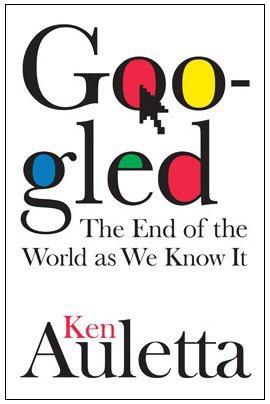
Googled: The End of the World as We Know It
by
Ken Auletta
Published 1 Jan 2009
Will their attention wander from Google? Today, Google appears impregnable. But a decade ago so did AOL, and so did the combination of AOL Time Warner. “There is nothing about their model that makes them invulnerable,” Clayton Christensen, Harvard business historian and author of the seminal The Innovators Dilemma, told me. “Think IBM. They had a 70 percent market share of mainframe computers. Then the government decided to challenge them. Then the PC emerged.” Seemingly overnight, computing moved from mainframes to PCs. For a long while, Microsoft seemed unstoppable, he said, only to be diverted by government intervention and the emergence of Linux and open-source software.
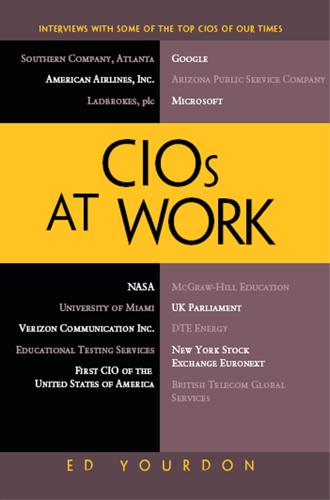
CIOs at Work
by
Ed Yourdon
Published 19 Jul 2011
., 87 Arizona Public Service (APS) Company, 66, 211, 223 Arizona State University, 227 ARPANET, 19, 117, 135 Art of Computer Programming, 2 Atlanta-based Southern Company, 191 AT&T, 191, 249 B Ballmer, Steve, 39 Bank of Boston, 47 Baylor-Grapevine Board of Trustees, 47 Bedrock foundation, 249 Bell Atlantic Mobile, 231 Bell Labs, 2, 249 BlackBerry, 60, 96, 116, 121, 171, 184, 246, 261, 296, 317 Blalock, Becky, 182, 191, 215 adaptability, 192 Air Force brat, 191, 192 Atlanta-based Southern Company, 191 banking industry, 203 Boucher, Marie, 196 brainstorm, 202 24/7 business, 199 business intelligence, 204 cloud computing, 205 cognitive surplus, 206 cognitive time, 206 Coker, Dave, 196 communication and education, 200 Community and Economic Development, 194 consumer market, 202 cybersecurity, 207, 209 data analytics, 204, 205 disaster recovery, 209 distributed generation, 204 distribution organization, 201 Egypt revolution, 198 farming technology, 206 finance backgrounds/marketing, 200, 209 Franklin, Alan, 193 Georgia Power, 191 Georgia Power Management Council, 193 global society, 206 Google, 198 incredible technology, 195 Industrial Age, 206 Information Age, 206 InformationWeek's, 196 infrastructure, 202 intellectual property, 196 intelligence and redundancy, 207 Internet, 198, 206 leapfrog innovations, 205 mainframe system, 207 marketing and customer service, 193, 200 MBA, finance, 192 microfiche, 207 microwave tower, 207 mobile devices, 203 mobility and business analytics, 205 Moore's Law, 205 new generation digital natives, 197 flexible and adaptable, 199 innovation and creativity, 199 superficial fashion, 198 Olympic sponsor, 193 out pushing technology, 202 reinforcement, 201 sense of integrity, 200 Southern Company, 194, 198, 201, 207 teamwork survey, 201 technology lab, 202 undergraduate degree, marketing, 192 virtualization, 205 VRU, 203 Ward, Eileen, 196 wire business, 201 world-class customer service, 203 Bohlen, Ken, 211 American Production Inventory Control Society, 211 Apple, 217 APS, 211, 223 ASU, 227 benchmarking company, 216 chief innovation officer, 229 Citrix, 217 cloud computing, 218, 219 cognitive surplus, 220 DECnet, 212 Department of Defense, 222 distributed computing, 217 energy industry, 214 gizmo/whiz-bang show, 216 GoodLink, 217 hard-line manufacturing, 218 home computing, 219 home entertainment, 219 Honeywell, 219 HR generalists, 215 information technology department, 211 Intel machines, 217 John Deere, 213 just say yes program, 223 Lean Six Sigma improvement process, 211 Linux, 220 MBA program, 214 mentors, 213 national alerts, 224 North American universities, 228 paradigm shifts, 218, 220 PDP minicomputers, 212 Peopleware, 226 prefigurative culture, 221 R&D companies, 218 Rhode Island, 226 role models, 213 San Diego Fire Department, 224 security/privacy issues, 217 skip levels, 223 smart home concepts, 219 smartphone, 217 social media, 225 Stead, Jerry, 214 Stevie Award, 211 Storefront engineering, 212 traditional management, 219, 226 Twitter, 224 vocabulary, 221 Waterloo operations, 213 Web 2.0 companies, 227 Web infrastructure, 215 wikipedia, 220 Y2K, 222 Botnets, 23 Brian's and Rob Pike's, 2 Bristol-Myers Squibb, 33 Broadband networks, 241 Brown, 227 Bryant, 227 BT Global Services, 253 BT Innovate & Design (BTI&D), 253 Bumblebee tuna, 130 C Career writing technology, 67 CASE tools, 232 Cash, Jim, 50 Christensen, Clyde, 212 Chrome, 14, 18 Chrysler Corporation, 175 Citibank, 337 Citicorp, 313 Citrix, 217 Client-server-type applications, 59 Cloud computing, 218, 219, 239, 240, 261, 262, 310, 311, 313 Cloud technology, 62 CNN, 54 COBOL, 250 Cognitive surplus, 20, 79, 206, 291 College of Engineering, University of Miami, 113 Columbia University, 1 Community and Economic Development, 194 Computer Sciences Corporation, 35 Computerworld magazine, 196 Consumer-oriented technology, 22 Content management system, 133 Corporate information management (CIM) program, 309 Corporate Management Information Systems, 87 Corvus disk drive, 36 Customer Advisory Boards of Oracle, 191 Customer-relationship management (CRM), 56 Cutter Business Technology Council, 173 D Dallas Children's Medical Center Development Board, 48 DARPA, 19 DDoS attacks and security, 81 DECnet, 212 Dell Platinum Council, 113 DeMarco, Tom, 16, 226 Department of Defense, 222, 329, 332 Detroit Energy, 252 Digital books, 30 Digital Equipment, 48 Distributed computing, 217 Dodge, 189 Dogfooding, 11, 37, 38, 236 DTE Energy, 173 DuPont Dow Elastomers, 151 E Educational Testing Service (ETS), 151 E-government, 282, 285 Electrical distribution grid, 182 Elementary and Secondary Education Strategic Business Unit, 151 Elements of Programming Style, 2 Ellyn, Lynne, 173 advanced technology software planning, 175 Amazon, 184 artificial intelligence group, 175 Association for Women in Computing, 173 benchmark, 180, 181 BlackBerries, 184 Burns, Ursula, 175 Chrysler, 176 Cisco, 186 cloud computing, 183, 184 component-based architecture, 186 corporate communications customer service, 185 Crain's Detroit Business, 173 cyber security threats, 177 degree of competence, 187 diversity and sophistication, 182 DTE Energy, 173 energy trading, 176 engineering and science programs, 188 enterprise business systems policy, 186 executive MBA program, 176 Facebook, 185 fresh-out-of-the-university, 187 General Electric, 174 Google, 184 Grace Hopper, 174 grid re-automation, 182 Henry Ford Hospital, 174 internal social media, 185 International Coaching Federation, 178 iPads, 184 IP electrical grids, 182 iPod applications, 182 IT budgets, 186 IT responsibilities, 176 Java, 186 level of sophistication, 179 lobbying efforts, 181 medical computing, 175 Miller, Joan, 174 Mulcahey, Anne, 175 Netscape, 175 neuroscience leadership, 189 object-oriented programming, 186 Oracle, 186 peer-level people, 179 people system, 177 policies and strategies, 180 Radio Shack, 180 remote access capacity, 189 security tool and patch, 183 sense of community, 180 Shipley, Jim, 174 smart grid, 177, 182 smart meters, 182 smart phone applications, 183 swarming, 179 technical competence, 178, 179 Thomas, Marlo, 174 Twitter, 185 UNITE, 181 vendor community, 186 virtualization, 183, 184 Xerox, 175 E-mail, 9 Employee-relationship management (ERM), 56 Encyclopedia, 115 Encyclopedia Britannica, 292 ERP, 123 F Facebook, 244 Ellyn, Lynne, 185 Sridhara, Mittu, 73, 84 Temares, Lewis, 116, 121, 131 Wakeman, Dan, 169 Federal information technology investments, 299 Flex, 236 Ford, 102 Ford, Monte, 47 agile computing, 59 agile development, 62, 66 airplanes, 51 American Airlines, 47 Arizona Public Services, 66 Bank of Boston, 47 Baylor-Grapevine Board of Trustees, 47 BlackBerry, 60 board of Chubb, 51 board of Tandy, 51 business organizations, 63 business school, dean, 50 career writing technology, 67 client-server-type applications, 59 cloud technology, 62 CNN, 54 common-sense functionality, 49 consumer-based technology, 60 CRM, 56 Dallas Children's Medical Center Development Board, 48 Digital Equipment, 48 ERM, 56 financial expert, 69 frequent-flier program, 57 frontal lobotomy, 57 Harvard Business Review, 50 HR policies, 65 IBM, 48 information technology, 47, 52 Internet, 54 Internet-based protocol, 59 iPhone, 52 IT stuff, 58 Knight Ridder, 51 legacy apps, 59 mainframe-like applications, 59 management training program, 64 marketing and technical jobs, 48 Maynard, Massachusetts mill, 48 MBA program, 50 mentors, 49 Microsoft, 50 mobile computing, 62 New York Times, 53 operations center, 54 PDP-5, 49 PDP-6, 49 Radio Shack, 51 revenue management, 57 role models, 49 security paradigms, 62 self-service machine, 57 Silicon Valley companies, 68 smartphones, 54 social networking, 51, 53, 56, 58 stateful applications, 59 techie department, 48 The Associates First Capital Corporation, 47 transmission and distribution companies, 47 wireless network, 59 YouTube, 65 Fort Worth, 226 Free software foundation, 19 Fried, Benjamin, 1, 241 agile development, 25 agile methodologies, 26 Apple Genius Bar, 8 ARPANET, 19 Art of Computer Programming, 2 Bell Labs, 2 books and records, accuracy, 25 botnets, 23 Brian's and Rob Pike's, 2 cash-like principles, 29 CFO, 4 check writers, 18 chrome, 14, 18 classic computer science text, 1 cognitive surplus, 20 Columbia University, 1 compensation management, 7 competitive advantage, 9, 18 computer science degree, 1 computer scientists, 6 consumer-driven computing, 12 consumer-driven software-as-a-service offerings, 12 consumer-driven technology, 12 consumer-oriented technology, 14, 22 corporate leadership, 25 cost centers, 4 DARPA, 19 decision makers, 17 decision making, 13 360-degree performance management, 7 detroit energy, 30 digital books, 30 document workbench, 2 dogfooding, 11 e-books, 29 Elements of Programming Style, 2 e-mail, 9 end-user support, 7 engineering executive group, 4 European vendors, 6 file servers and print servers, 17 Folger Library editions, 30 free software foundation, 19 German company, 13 German engineering, 13 Gmail, 15 Godot, 26 Google, 1 books, 29 products, 5, 10 software engineers, 6 hiring managers, 6 HR processes and technologies, 6 IBM model, 13 instant messaging, 9 Internet age, 6 interviewers, training, 6 iPad, 29 iPhone, 29 IPO, 3 IT, engineering and computer science parts, 4 Knuth's books, 2 Linux machine, 8 Linux software, 19 machine running Windows, 8 Macintosh, 8 Mac OS, 9 macro factors, 11 Managing Director, 1 mentors, 1 microcomputers, 18 Microsoft, 5 Minds for Sale, 20 Morgan Stanley, 1–3, 5, 16 nonacademic UNIX license, 2 nontechnical skills, 5 oil exploration office, 17 open-source phone operating system, 20 outlook, 15 PARC, 19 performance review cycles, 7 personal computer equipment, 15 post-Sarbanes-Oxley world, 25 project manager, 13 quants, 24 rapid-release cycle, 26 R&D cycle, 24 regression testing, 27 role models, 1 shrink-wrapped software, 14 signature-based anti-virus, 22 smartphone, 20, 27 social contract, 8 society trails technology, 21 software engineering tool, 13 software installation, 14 supply chain and inventory and asset management, 10 SVP, 4 telephony, 17 ten things, 13 TMRC, 19 TROFF, 2 typesetter workbench, 2 UI designer, 14 university computing center, 28 videoconferencing, 12 Visicalc, 24 Wall Street, 23 Walmart, 6 waterfall approach, 25 XYZ widget company, 5 YouTube video, 20 G Gates, Bill, 39, 50 General Electric, 134 General Foods, 309, 326–328 General Motors, 33, 321, 329, 332 George Mason School of Information Technology, 309 Georgia Power Company, 191–193, 196 Georgia Power Management Council, 193 German company, 13 German engineering, 13 German manufacturing company, 232 Gizmo/whiz-bang show, 216 Gmail, 15 GoodLink, 217 Google, 1, 84, 85, 117, 217, 219, 220, 222, 235, 241, 263, 302, 319 apps, 314 books, 29 commercial products, 10 model, 293 Government Accountability Office (GAO), 305 4G program, 250 4G smartphone, 235 GTE, 231 Gupta, Ashish aspiration, organization, 256 bandwidth and network infrastructure, 267 BlackBerry, 261 business and customer outcomes, 274 capital investment forums, 269 career progression, 255 cloud-based shared infrastructure model, 263 cloud computing, 261, 262 collaboration, 272 communications infrastructure, 258 compute-utility-based model, 262 control and integrity, 268 core competency, 255 core network infrastructure, 267 core strengths, 256 cost per unit of bandwidth, 267 customer demands, 268 data protection, 261, 262 decision-making bodies, 269 demographics, 272, 273 device convergence, 263 dogfooding, 259 employee flexibility, 260, 264 engagement and governance, 269 enterprise market segment, 261 equipment management, 260 executive MBA, 256 fourth-generation LTE networks, 267 functional service departments, 270 Global Services, distributed organization, 257 Google, 263, 275 Google Apps, 266 handheld devices, 265 hastily formed networks, 258 IMF, 266 innovation and application development, 265 iPad, 257, 260, 261, 266,267 iPhone, 266 Japan, 257, 258 London Business School, 253 management functions, 257 management sales functions, 257 market segments, 259 MBA, General Management, 253 measurements, 271 messaging with voice capability, 264 mini-microcomputer model, 261 mobile communications network, 258 mobile-enabling voice, 259 mobile phone network, 260 mobile traffic explosion, 265 network infrastructures, 265 network IT services, 254 network quality, 257 new generation digital natives, 271 disadvantages, 273 Google, 273 opportunities, 273 Olympics, 263 opportunities, 275 organizational construct, 272 outsourced network IT services, 259 outsourcing, 271 per-use-based model, 262 portfolio and business alignment, 274 Portfolio & Service Design (P&SD), 253 primary marketing thrust, 264 product development thrust, 264 product management team, 259 project and program management, 255 resource balance, 270 scalability, 262 security, 262 Selley, Clive, 254, 255 service delivery organization, 254 single-device model, 264 smart devices, 267 smart phones, 266 telecommunications capability, 259 upward-based apps, 264 virtualization, 261 voice-over-IP connections, 258 Windows platform, 261 Gurnani, Roger, 231 accounting/finance department, 233 analog cellular networks, 250 AT&T, 249 bedrock foundation, 249 Bell Atlantic Mobile, 231 Bell Labs, 249 blogs, 244 broadband networks, 241 business benefits, 237 business device, 240 business executives, 238 business leaders, 248, 249 business relationship management, 248 buzzword, 239 CASE tools, 232 cloud computing, 239, 240 COBOL, 250 consumer and business products, 231 consumer electronics devices, 241 consumer telecom business, 233 customer-engagement channel, 244 customer forums, 244 customer support operations, 251 customer-touching channels, 236 degree of control, 246 distribution channel, 250 dogfooding, 236 ecosystem, 243, 249 enterprise business, 233 ERP systems, 236 face-to-face communications, 244 FiOS product, 235 flex, 236 "follow the sun" model, 239 German manufacturing company, 232 4G program, 250 4G smartphone, 235 hardware/software vendors, 247 information assets, 245 information technology strategy, 231 intellectual property rights, 244 Internet, 235, 239 iPhone, 243 Ivan, 232 Lowell, 232 LTE technology-based smartphone, 235 marketing, 251 MIT, 246 mobile technology, 234 Moore's law, 242 MP3 file, 235 network-based services, 240 Nynex Mobile, 233 P&L responsibility, 251 PDA, 238 personal computing, 235 product development, 234, 251 role models, 232 sales channels, 251 smartphones, 238 state-level regulatory issues, 251 state-of-the-art networks, 243 telecom career, 232 telephone company, Phoenix, 234 Verizon Communication, 231, 232 virtual corporations, 241 Web 2.0, 244 Williams Companies, 232, 233 WillTell, 233 wireless business, 233 H Hackers, 19 Harmon, Jay, 213 Harvard Business Review, 50 Harvard Business School, 331 Heller, Martha, 171 Henry Ford Hospital, 174 Hewlett-Packard piece, 129 Home computing, 219 Honda, 102 Honeywell, 219 Houghton Mifflin, 134, 136 I IBM, 48, 250 manpower, 311 model, 13 Indian IT outsourcing company, 255 Information technology, 52 Intel machines, 217 International Coaching Federation, 178 Internet, 9, 44, 54, 117, 235, 239, 316, 322 Internet-based protocol, 59 Interoperability, 341 iPads, 2, 94, 97, 184, 257, 260, 264, 267, 288, 289, 295, 296 IP electrical grids, 182 iPhones, 43, 52, 96, 101, 170, 181, 260, 264,296 iPod, 101 IT lifecycle management process, 37 Ivan, 232 J John Deere, 213 K Kansas, 226 Kernigan, Brian, 2 Knight Ridder, 51 Knuth, Donald, 2, 29 Kraft Foods Inc, 309 Krist, Nicholas, 28 Kundra, Vivek Clever Commute, 305 cognitive surplus, 303 command and control systems, 301 consumerization, 302 consumption-based model, 300 cyber-warfare, 301 Darwinian pressure, 302 desktop core configuration, 306 digital-borne content, 301 digital oil, 300, 307 digital public square, 304 enterprise software, 303 entrepreneurial startup model, 306 frugal engineering, 306 Google, 302 government business, 302 innovator's dilemma, 307 iPad, 302 IT dashboard, 302 leapfrog technology, 306 massive consumerization, 301 megatrends, 301 parameter security, 302 Patent Office, 305 pharmaceutical industry, 304 phishing attacks, 301 policy and strategic planning, 299 security and privacy, 301 server utilization, 300 social media and technology, 300, 306 storage utilization, 300 Trademark Office, 305 Wikipedia, 303 L LAN, 259 Lean Six Sigma improvement process, 211 Levy, Steven (Hackers), 19 Linux, 220 machine, 8 open-source software, 19 Lister, Tim, 226 London Business School, 73, 253, 256 Long-term evolution (LTE), 235 Lowell, 232 M MacArthur's intelligence officer, 327 Macintosh, 8 Mainframe computers, 118 Mainframe-like applications, 59 Marriott's Great America, 35 McDade, 327 McGraw-Hill Education, 133, 147, 150 Mead, Margaret, 221 Mendel, 311 Microcomputers, 18 Microsoft Corporation, 5, 11, 33, 36, 38, 41, 44, 46, 50, 156, 217, 223, 236, 250, 293 Microsoft Higher Education Advisory Group, 113 Microsoft's operational enterprise risk management, 33 Middlesex University, 189 Miller, Joan Apple products, 295 authority and accuracy, 292 award-winning ICT programs and services, 277 back locked-down information, 289 big-scale text issues, 294 big-time computing, 279 BlackBerry, 296 business management training, 281 business skills, 281 central government, 283 cognitive surplus, 291 community care project, 278 community development programs, 277, 278 computers, constituency office, 294 confidential information, 284 data management, 281 decision making, 286 democratic process, 288 economics degree, 278 e-government, 282, 285 electronic communication, 289 electronic-enabled public voice, 286 electronic information, 288 electronic media, 286 electronic records, 280, 284 electronic services, 294 e-mail, 289, 290, 295 forgiving technology, 296 front-office service, 282, 283 Google, 292 Google's cloud service, 290 Government 2, 287 Health and Social Care, 284 House business, 294 House of Lords, 288 ICT strategy, 289, 290 information management, 278 insurance company, 278 Internet information, 285 iPad, 288, 289, 296 IT data management, 279 management principle, 280 local government, 283 mainframe environment, 289 member-led activity, 287 messages, 289 Microsoft, 293 Microsoft's cloud service, 290 mobile electronic information, 284 mobile technology, 289 national organization, 284 network perimeters, 290 official government information, 285 on-the-job training, 281 organizational planning, 278 Parliamentary ICT, 277 project management, 279 public sector, 282 public transportation, 285 quango-type organizations, 283 representational democracy, 286 security, 290, 291 social care organization, 279 social care services, Essex, 278 social care systems, 284 social networking, 285 sovereignty, 291 sustainability and growth, 293 technical language, 294 technology skills, 281 transactional services, 285 transferability, 291 Web-based services, 285 Wikipedia, 291, 292 X-factor, 286 Minds for Sale, 20 Mitchell & Co, 333 MIT Media Labs, 149 Mobile computing, 62 Mobile technology, 234 Mooney, Mark, 133 artificial intelligence, 134 back-office legacy, 136 balancing standpoint, 145 BBC, 140 Bermuda Triangle, 135 BlackBerry shop, 142 Bureau of National Standards, 136 business model, 140 career spectrum, 144 cloud computing, 148 competitive intelligence and knowledge, 143 Connect, 141 customer-facing and product development, 135 customer-facing product space, 137 customer space and product development, 136 digital products development, 144 digital space and product, 146 educational and reference content, 139 educational products, 141 entrepreneur, 150 General Electric, 134 GradeGuru, 140 handheld devices, 142 hard-core technical standpoint, 146 hardware servers, 142 Houghton Mifflin, 134, 136 HTML, 138 industrial-strength product, 141 intellectual content, 148 Internet, 148 iPad, 138, 139, 142 iPhone, 142, 143 iTunes, 138 Klein, Joel, 147 learning management systems, 137 long-term production system, 141 Marine Corps, 134 McGraw-Hill Education, 133, 147 media development, 144 media space, 138, 142 mobile computing, 139 MOUSE, 150 online technology, 138 open-source capabilities, 142 Oracle quota-management system, 143 people's roles and responsibilities, 137 Phoenix, 149 product development, 149 publishing companies, 142 publishing systems, 137 Reed Elsevier, 133, 136 Salesforce.com, 144, 149 scalability testing, 145 senior business leaders, 146 social network, 148 soft discipline guidelines, 141 solar energy, 149 Strassmann, Paul, 135 technical skill set, 143, 144 testing systems integration, 145 The Shallows, 139 transactional systems, 142 trust and integrity, 145 TTS, QuickPro, and ACL, 144 Vivendi Universal, 134 War and Peace today, 139 Moore's law, 242 Morgan Stanley, 2, 3, 16 N NASA, 309, 333, 334 National Institute of Standards and Technology (NIST), 173 Naval Postgraduate School, 134 Netscape, 175 New Brunswick model, 282 News Corp., 147 New York Stock Exchange (NYSE), 87, 116, 223, 278 New York Times, 53 North American universities, 228 NSA/CIA software, 134 Nynex Mobile, 233 O Oil exploration office, 17 Open-source phone operating system, 20 Outlook, 15 P Pacer Software, 135 Paradigm shifts, 218, 220 Parks and Recreation Department, 126 PDP minicomputers, 212 Peopleware, 226 Personal computing, 235 Personal digital assistant (PDA), 238 Petri dish, 44 Phoenix, 211 Plauger, Bill, 2 Q Quants, 24 R Radio Shack, 51 Reed Elsevier, 133, 136 Reed, John, 335 Rubinow, Steve, 87 AdKnowledge, Inc., 87 agile development, 110 Agile Manifesto, 110 Archipelago Holdings Inc., 87 attributes, 108 capital market community, 91 cash/actual trading business, 88 channel marketing departments, 92 cloud computing, 97 CNBC, 89 collaborative technology, 95 collective intelligence, 95 communication skills, 102, 106 conference organizations, 99 consumer marketplace, 94 data center, 90 decision making, 105, 108 economy standpoint, 100 e-mail, 100 Fidelity Investments, 105 financial services, 92 IEEE, 101 innovative impression, 94 Internet, 98 iPad, 97 iPod device, 91 labor laws, 110 listening skills, 106 logical progression, 104 Mac, 96 mainframe, 104 management and leadership, 104, 105 market data system, 89 micro-second response time, 89 mobile applications, 94 multidisciplinary approach, 103 multimedia, 97 multi-national projects, 110 multiprocessing options, 99 network operating system, 103 NYSE Euronext, 87 open outside system, 88 parallel programming models, 99 personal satisfaction, 109 PR function, 106 proclaimed workaholic, 109 real estate business, 88 regulatory and security standpoint, 96 Rolodex, 94 Rubin, Howard, 99 server department, 97 software development, 89 sophisticated technology, 101 technology business, 88 technology integration, 91 trading engines, 90 typewriter ribbon, 94 virtualization, 98 Windows 7, 96 younger generation video games, 93 visual interfaces, 93 Rumsfeld, Donald, 222 S San Diego Fire Department, 224 Santa Clara University, 36 SAS programs, 131 Scott, Tony, 10, 33, 236 Android, 43 Apple Computer, 35 architectural flaw, 44 BASIC and Pascal, 35 Bristol-Myers Squibb, 33 Bunch, Rick (role model), 34 business groups, 42 COO, 39 Corporate Vice President, 33 Corvus disk drive, 36 CSC, 35 Defense department, 45 dogfooding, 37, 38 games and arcades, 35 General Motors, 33 IBM's role, 37 information systems management, 36 integrity factor, 40 Internet, 44 iPhone, 43 IT lifecycle management process, 37 leadership capability, 40 leisure studies, 34 macro-architectural threats, 44 Marriott's Great America, 35 math models, 36 Microsoft Corporation, 33, 36, 38, 41, 44, 46 Microsoft's operational enterprise risk management, 33 parks and recreation, 34 Petri dish, 44 playground leader, 42 product groups, 42 quality and business excellence team, 33 Santa Clara University, 36 Senior Vice President, 33 smartphone, 43 social computing, 38 Sun Microsystems, 36 theme park industry, 35 University of Illinois, 34 University of San Francisco, 36 value-added business, 33 Walt Disney Company, 33 Senior Leadership Technology and Product Marketing, 71 Shakespeare, 30 Shirky, Clay, 220 Sierra Ventures, 191 Silicon Valley companies, 68 Silicon Valley software factories, 323 Skype, 118 Smart Grid Advisory Committee, 177 Smartphones, 20, 27, 43, 54, 217, 238 Social care computer electronic record system, 279 Social computing, 38, 320 Social networking, 51, 53, 56, 58 Society trails technology, 21 SPSS programs, 131 Sridhara, Mittu, 71 Amazon, 76 American Airlines, 72 back-end computation and presentation, 80 banking, 77 B2B and B2C, 85 business/product departments, 82 business work context, 74 buzzword, 77 career aspiration, 73 career spans, 73 coders, 72 cognitive surplus, 79 competitive differentiation, 74 computing power, 78 contribution and energy, 85 convergence, 75 CPU cycles, 78 cross-channel digital business, 71 cultural and geographic implementation, 72 customer experience, 84, 85 customer profile, 76 data visualization, 79, 80 DDoS protection, 81 economies of scale, 77 elements of technology, 72 encryption, 82 end customer, 83 entertainment, 75 ERP system, 72 Facebook, 84 finance and accounting, 73 foster innovation and open culture, 81 friends/mentors/role models, 74 FSA, 76 gambling acts, 81 games, 79 gaming machines, 80 GDS, 72 global organization, 71 Google, 75, 84, 85 Group CIO, Ladbrokes PLC, 71 industry-standard technologies, 77 integrity and competence, 83 IT, 74, 82 KickOff app, 71 land-based casinos, 79 live streaming, 78 London Business School, 73 mobile computing, 78 multimedia, 84 new generation, 84 on-the-job training, 73 open-source computing, 79 opportunity, 80, 83 PCA-compliant, 81 personalization, 76 real-time systems, 74 re-evaluation, 81 reliability and availability, 77 security threats, 80 smart mobile device, 75 technology-intense customer, 85 top-line revenue, 74 trader apps, 82 true context, 73 underpinning business process, 76 virtualization, 78 Visa/MasterCard transactions, 78 Web 3.0 business, 76 web-emerging web channel, 76 Wikipedia, 79, 85 Word documents and e-mail, 82 work-life balance, 84 young body with high miles, 72 Zuckerberg, Mark, 73 Stead, Jerry, 214 Storefront engineering, 212 Strassmann, Paul, 228, 309 agile development, 340 Amazon EC2, 314 America information processors, 322 Annapolis, 340 AT&T, 332 backstabbing culture, 339 BlackBerry, 317 block houses, 319 CFO/CEO position, 337 CIM program, 309 Citibank, 337 Citicorp, 313, 339 cloud computing, 310, 311, 313 coding infrastructure, 341 communication infrastructure, 341 corporate information management, 329 Corporate Information Officer, 309 counterintelligence, 320 cyber-operations, 338 Dell server, 314 Department of Defense, 329, 332 Director of Defense Information, 309 employee-owned technology, 316 enterprise architecture, 316 exfiltration, 313 financial organizations, 320 firewalls and antiviruses, 312 General Foods, 309, 326–328 General Motors, 321, 329, 332 George Mason School of Information Technology, 309 Google apps, 314 government-supported activities, 326 Harvard Business School, 331 HR-related issues, 331 IBM manpower, 311 infiltration, 313 Internet, 316, 322 interoperability, 315, 317, 341 Kraft Foods Inc, 309 MacArthur's intelligence officer, 327 Machiavellian view, 327 mash-up, 316 military service, 331 NASA, 309, 333, 334 police department, economics, 312 powerpoint slides, 324 Radio Shack, 319 senior executive position, 334 service-oriented architecture, 316 Silicon Valley software factories, 323 social computing, 320 Strassmann's concentration camp, 318 structured methodologies, 342 U.S.